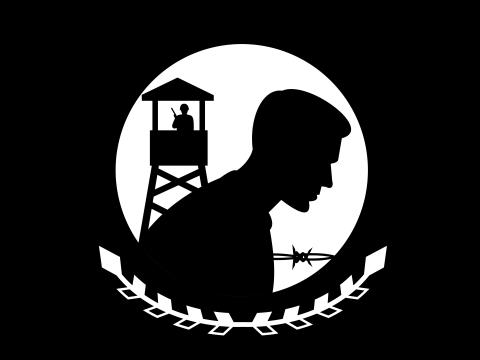POW! BOOM! CRASH! SMASH! WHACK!
This are words I remember from long ago when reading comic like Superman, Batman, The Hulk, Dick Tracy. Words that described the sounds of fighting. But POW has a much different meaning to me today. POW: Prisoner of War
Since the beginning of time, tribes and civilizations have been warring. And when enemies were captured, they were often tortured and murdered. During the 19th century, nations agreed that it was necessary to prevent inhumane treatment of prisoners and the use of weapons that caused unnecessary harm. However, nations vary in their dedication to following these laws, and historically the treatment of POWs has varied greatly
During World War I (July 1914–November 1918), about eight million men from all involved countries surrendered and were held in POW camps until the war ended. But the treatment of POWs in World War II (September 1939-September 1945), was much harsher. Prisoners of war from China, the United States, Australia, Britain, Canada, India, the Netherlands, New Zealand, the Philippines, and Japanese-occupied Asia, held by Japanese imperial armed forces were subject to murder, torture, beatings, brutal treatment, slavery, medical experiments, starvation rations, poor medical treatment and cannibalism. The most notorious use of forced labor was in the construction of the Burma–Thailand Death Railway. After March 1943, the Imperial Navy of Japan was ordered to kill prisoners of war taken at sea.
In the Pacific Theater, nearly 30,000 Americans were imprisoned by the Japanese. Most of these men and women were captured after the fall of the Philippines and suffered nearly a 40% death rate - some of the highest death rates in American history. Prisoners of war suffered a brutal captivity, and many were crowded into "hell ships" bound for Japan. Often, the unmarked ships were torpedoed by submarines. Those POWs who survived imprisonment in the Philippines and the hell ships were forced to work in mines and other locations in Japan. Most worked seven days a week with minimal food.
In 1949, countries gathered to form the Third Geneva Convention which clearly stated that prisoners of war must be humanely and respectfully treated. They must be allowed to communicate with family and given adequate food, clothing and medical attention. They do not need to provide any information other than name, rank and serial number.
During the Korean War (June 1950–July 1953) the North Koreans developed a reputation for severely mistreating and torturing prisoners of war. Jack Downey, a non-military Central Intelligence Agency officer captured in China during the Korean War, was held prisoner for 21 years.
Over the 20 years of the Vietnam War (November 1955-April 1975) the Viet Cong and North Vietnamese Army took many US military as prisoners of war and also subjected them to torture. The service men gave nicknames to many of these camps: Alcatraz, Briarpatch, the Zoo, Little Vegas, the Plantation, Dogpatch. The most notorious and cruel of these camps was known as the Hanoi Hilton (Hỏa Lò Prison).
United States Army colonel Floyd James "Jim" Thompson is the longest-held military prisoner of war in American history, spending nearly nine years in captivity during the Vietnam War - nearly nine years in South Vietnam, Laos, and North Vietnam. He survived torture and extreme deprivation. He returned to a US that had changed significantly and a wife, who thought he was dead and who had moved on with her life. It would be unrealistic to think that the men and women who endured a prisoner of war camp would return unscathed. There were severe physical injuries as well as terrifying psychological wounds.
In 1991, during the Gulf War (August 1990–February 1991), American, British, Italian, and Kuwaiti POWs (mostly crew members of downed aircraft and special forces) were tortured by the Iraqi secret police. 23 Americans were captured, including two women. The Iraqi government declared its intent to use the prisoners of war as human shields. Threat of torture and actual physical abuse were common. Beatings with pipes and hoses, bursting eardrums with fists and electrical shocks with volts from car batteries were experienced by the prisoners. Fortunately, all 23 of the American POWs returned to the United States.
- Log in to post comments
